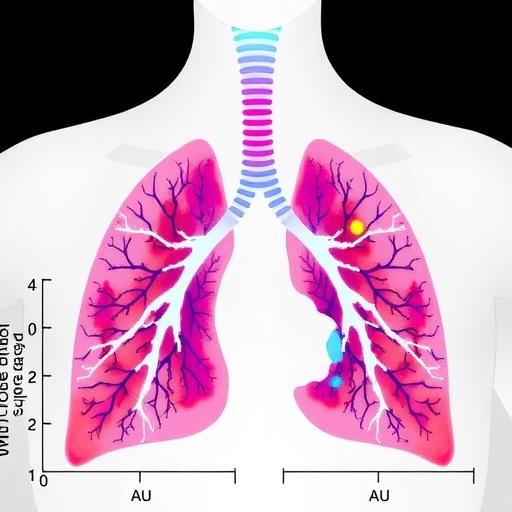In a groundbreaking study conducted at the University of Cambridge, scientists have unveiled the most comprehensive atlas to date detailing gene expression throughout the adult developmental cycle of the mouse mammary gland. This transformative work meticulously maps the molecular landscape underpinning the dramatic remodeling that the mammary gland undergoes during pregnancy, breastfeeding, and involution—the biological process during which the gland reverts to its resting state following lactation. By integrating cellular profiling with time-specific gene expression data, this research offers profound insights into the molecular orchestration of mammary gland function, with far-reaching implications for maternal health, infant nutrition, and disease prevention.
The mammary gland comprises a diverse assortment of cell types, each playing specialized roles that collectively enable its complex physiological functions. Among these populations are adipocytes, which provide structural support and energy reserves; basal cells, known for their contractile action essential for milk ejection; and luminal epithelial cells, which are responsible for milk production. Researchers focused on characterizing the dynamic interplay and shifting abundances of these cell types at ten carefully selected time-points encompassing pre-pregnancy, various stages of gestation, active breastfeeding, and the involution phase. The resulting cellular composition profiles revealed dramatic temporal changes, illuminating how the gland’s architecture adapts in response to physiological demands.
Beyond cataloging cellular diversity, the team employed high-resolution transcriptomic analyses to interrogate gene expression patterns associated with each cell type across the developmental timeline. This approach allowed them to link individual genes and gene networks to key functional shifts occurring during the mammary gland cycle. Notably, genes traditionally implicated solely in milk synthesis were found to exhibit temporally and spatially nuanced expression in other cell compartments, including basal cells responsible for milk expulsion. Such findings challenge the conventional compartmentalization of gene function and open new avenues for understanding the etiology of lactation impairments.
A particularly compelling aspect of this study is the identification of genes associated with breastfeeding difficulties that manifest not only in secretory cells but also in auxiliary components of the gland’s machinery. For instance, some genes implicated in insufficient milk supply were active in basal cells, suggesting that mechanical deficiencies in milk ejection—rather than diminished milk production per se—could underlie certain lactation failures. This revelation highlights previously underappreciated cellular targets for diagnostic and therapeutic intervention, potentially offering novel strategies to support mothers experiencing breastfeeding challenges.
The research also sheds light on the molecular underpinnings of postpartum breast cancer, a malignancy linked to the period following childbirth and characterized by heightened aggressiveness. The team discovered that genes associated with postpartum breast cancer are activated immediately after weaning across multiple cell types, including adipocytes. Historically overlooked in breast cancer studies, fat cells within the mammary gland may contribute actively to tumorigenesis through complex paracrine interactions and microenvironmental modulation during involution. This insight not only broadens the scope of cells implicated in postpartum breast cancer pathophysiology but also suggests new biomarkers for early detection and prevention efforts.
Moreover, this investigation delved into the role of imprinted genes—those exhibiting parent-of-origin-specific expression patterns—in the adult mammary gland. While imprinted genes in the placenta have been extensively studied for their vital functions in prenatal development, their significance in postnatal tissue remodeling and function has remained elusive. The study identifies 25 such genes with precise temporal activation during the mammary developmental cycle, implicating them as critical regulators orchestrating milk production and structural adaptation throughout motherhood. These findings enrich understanding of epigenetic control mechanisms influencing mammary gland physiology.
The atlas generated by the Cambridge team represents an unprecedented resource for the scientific community, blending cellular resolution with temporal dynamics to decode the complex genetic choreography governing mammary gland adaptation. Such molecular granularity enhances our comprehension of normal developmental processes and creates a foundation for deciphering pathological deviations that compromise maternal and infant health. For example, understanding how specific gene dysregulation contributes to lactation difficulties or malignant transformation could inform precision medicine approaches tailored to at-risk populations.
Of equal importance is the identification of mechanical factors underlying breastfeeding problems, expanding the focus beyond milk synthesis. By highlighting the role of basal cells and other structural components, the study underscores the multifactorial nature of lactation success. This perspective advocates for integrated diagnostic frameworks considering both secretory function and mechanical competence, thereby refining clinical support for breastfeeding mothers and potentially improving infant health outcomes through optimized milk delivery.
Postpartum breast cancer represents a formidable clinical challenge due to its association with hormonal flux, tissue remodeling, and an inflammatory microenvironment provoked by involution. The revelation that adipocytes and other less-studied cell types play active roles in activating pro-tumorigenic genes during this phase elevates these cells from bystanders to contributors in cancer etiology. Consequently, targeting intercellular communication networks or remodeling pathways involving adipocytes may emerge as viable strategies to mitigate postpartum cancer risk.
Fundamentally, breastfeeding exerts a profound influence on long-term health trajectories for both mother and child. Epidemiological data affirm that breastfed infants exhibit reduced risks of metabolic disorders such as obesity and type 2 diabetes, which underscores the critical necessity of supporting lactation. However, approximately five percent of women experience breastfeeding difficulties, a figure that calls for intensified research and clinical attention. The detailed genetic atlas produced by this study equips researchers and healthcare providers with molecular roadmaps to better understand and address these obstacles.
The investigation’s approach—marrying developmental biology with genomics—exemplifies the power of multidimensional research to unravel complex biological phenomena. By charting the adult mammary gland’s molecular landscape across its reproductive cycle, this work paves the way for future discoveries, including the potential development of predictive tools or novel therapeutics that leverage gene expression profiles to enhance maternal and infant health outcomes.
Dr. Geula Hanin, senior author of the study, emphasizes the universal importance of breastfeeding across mammalian evolution and the necessity of advancing scientific understanding to aid mothers facing lactation challenges. She envisions this research as a catalyst for transformative interventions that could reduce breastfeeding problems and confront postpartum breast cancer more effectively.
This landmark study forms part of ongoing efforts by collaborative networks such as the Cambridge Lactation Network and Cambridge Reproduction, which strive to translate genetic and cellular insights into practical health benefits. As this atlas and its associated findings gain traction, they are poised to revolutionize the fields of reproductive biology, maternal health, and oncology.
The full findings have been published in the esteemed journal Nucleic Acids Research and stand as a testament to the intricate biological ballet performed by genes and cells in the mammary gland. With the gene expression atlas now publicly available, researchers worldwide can explore this rich data to uncover new biological principles and therapeutic possibilities, ultimately advancing human health at a fundamental level.
Subject of Research: Animals
Article Title: Dynamic Allelic Expression in Mouse Mammary Gland Across the Adult Developmental Cycle
News Publication Date: 9-Sep-2025
Web References: http://dx.doi.org/10.1093/nar/gkaf804
Image Credits: Geula Hanin
Keywords: Mammary gland, gene expression atlas, lactation, breastfeeding disorders, postpartum breast cancer, basal cells, adipocytes, imprinted genes, involution, mouse model, maternal health, developmental biology
Tags: biological processes of involutionbreastfeeding challenges and solutionscellular profiling in lactationcomprehensive atlas of mammary gland functiondynamic changes in breast cell typesgene expression in mammary cellsimplications for breastfeeding successmammary gland development during pregnancymaternal health and infant nutritionmolecular mechanisms of lactationmouse mammary gland researchspecialized roles of breast cell types





